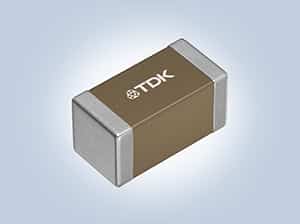The 1 µF, 100 V capacitor helps 48-V systems use less space, fewer parts, and makes power design easier in electronics.

TDK Corporation has added a 1 µF, 100 V-rated MLCC to its C series of commercial multilayer ceramic capacitors. It comes in a compact 1608 size and uses X7R dielectric material, which offers stable performance under temperature and voltage changes. This is currently the highest capacitance available in the industry for this voltage and size class.
The product entered mass production in June 2025. It is designed mainly for input capacitor use in power supply ICs that operate in commercial and industrial 48-V systems. These systems are common in AI servers, energy storage systems, and factory equipment.
The company claims to achieve this performance by improving the ceramic material and internal structure, allowing the new MLCC to store more charge in the same small package.
Compared to older products in the same size, this MLCC delivers ten times the capacitance. This means designers can meet power requirements using fewer components, which simplifies circuit design and layout.
The 100 V rating supports the growing demand for MLCCs that can handle higher voltages in compact spaces, especially as 48-V systems become more common in computing and industrial applications.
As part of the C series, the new MLCC benefits from the same reliability and manufacturing quality seen across TDK’s capacitor portfolio. TDK also plans to expand the series with more products in the future to meet changing application needs.
By offering high capacitance in a small size, the new MLCC helps reduce the number of capacitors needed on a board. This saves PCB space, cuts the total component count, and can lower manufacturing costs.
Fewer components also mean simpler assembly and better reliability, supporting efforts to miniaturize devices and improve power system efficiency in high-density electronics.


